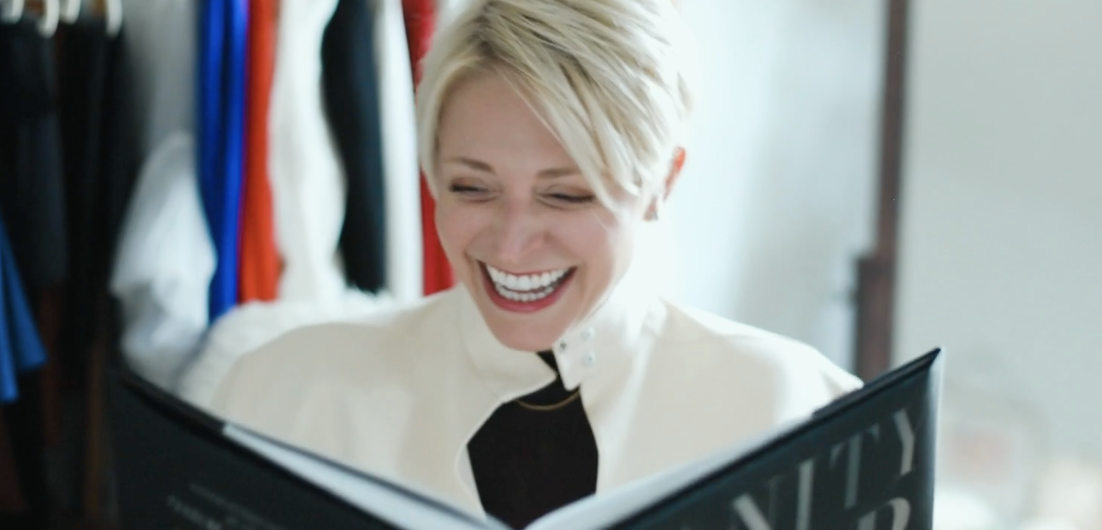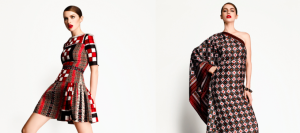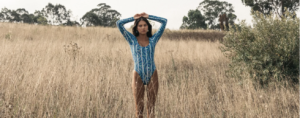I dreamed up this humble little blog in 2013 after a different-than-expected jaunt in New York fashion PR and a misaligned stint in financial marketing–neither of which utilized my journalism degree or made me feel like I was contributing to my community or the climate crisis in substantive ways.
But when you venture on the wrong path, the right one becomes infinitely more clear. (I imagine someone, somewhere said. If not, I stake my claim.)
The backstory goes like this…
The finance office I drove an hour to every day, was dominated by frat lord New Balances and boring business caszh. In my first week, I wore what I thought were respectably tailored shorts and got pulled aside for an HR talk (didn’t they know I was ahead of my time?!). By month two, I dropped my hemlines to my knees but adopted louder colors and pattern mixing to make up for the blow to my style identity. Three months in, my coworkers took to calling me “The Peacock,” a name that, at the time, I took too seriously as an insult.
I’d go home wishing I still worked in fashion, but without contributing to its toxic impact and culture. That led down 2 a.m. click holes exploring sustainable fashion before big brands like H&M and Lululemon drained it of meaning. Because of over- and misuse, “sustainable fashion” is as misunderstood as Severus Snape today.
What I learned led me to start writing. And when I decided to make things official and self-publish, I realized my coworkers weren’t insulting me—they were spoon-feeding me my brand.
The origins of the Peahen name
“Peacocking,” in the wild world of mating, means wearing bold, flashy, or unconventional attire to attract attention. It’s a designation mostly assigned to men. So at face value, a peacock didn’t seem right for me. But I found inspiration in the gender role reversal of the species, or peafowl. The male peacock is adorned with colorful feathers for courting. The female peahen has subdued feathers and picks her mate from the lot. So I guess you could say, she wears the feathers—they never wear her.
A peahen was a mascot I could hang my hat on, so I remixed my office nickname and the rest, well, you can see it on this blog.
In a decade, I’ve connected with and learned from as many people as I could in this small space and published deep dives and opinions about sustainable fashion in hopes of sharing what I’ve learned. Admittedly, these weren’t always regular, but I hope you’ve found them useful over the years.
Part of this journey also meant changing my wardrobe by adopting slow fashion practices and alternative consumption channels. But the part I found most rewarding happened outside the blog. I joined organizations that fostered dialogue and community outside of the blog, published my writing on outlets with more reach, worked with people directly by selling secondhand, and, most recently, launched a personal styling business.
I’ve been quiet for some time because I’m working on an overhaul of The Peahen to merge my writing with my personal styling business. I’m calling it Peahen Studio and it will be a place to learn about sustainable fashion and make it a reality in your wardrobe. But before the new site launches, I figured it was time for some revelry and a retrospective. So here goes the listicle-ish thing you came for.
6 things I’ve learned about sustainable fashion
1. Businesses and governments should carry the torch.
Since I started blogging, I’ve seen the rise of the eco-influencer, the confluence of more ethical shoppers, and what felt like a bubble bursting with mass retailers peddling conscious collections. Eventually, it became clear much of this is smoke and mirrors. Our ethical purchases, however well-intended, may sadly be serving a delusion.
I’m not saying we shouldn’t all make more informed and conscious decisions about our wardrobes, just that these individual efforts can backfire if the system isn’t accountable. They also barely scratch the surface of what businesses or governments can do at scale.
With more than 75 million people employed in fashion globally, working mostly unregulated labor contracts, and Americans wearing five times more clothes than they did in the 80s—fashion is, and should be, more politically charged.
Today, we need more focus on advocacy, more accurate sustainability data, and regulations to reign in corporate greed and greenwashing. Organizations like Fashion Revolution and Remake are campaigning for this. And the FABRIC Act stands to enforce regulations in California that could reach across the globe. You can take action by coupling your wardrobe transformation with advocacy. It can be as simple as volunteering at a thrift shop (they need help sorting inventory!), speaking up about the issues to friends and family, and campaigning and voting for legislators who support these bills like Sen. Gillibrand, Sen. Booker, Sen. Warren, and Sen. Sanders. Start by signing the FABRIC Act petition here.
2. You can’t shop your way to a better world.
This follows the above, but the most sustainable option is always going to be what’s already in your closet. Consumption patterns are so high today that we’ve started to over-consume secondhand clothes as thrift stores are inundated with bad haul purchases and Shein trash. The ideas of “charity fashion” and “t-shirts for a cause” have fueled the neoliberal notion that we can shop our way out of inequity while throwaway culture proliferates unabated.
If there’s a cause you care about, try giving time or money instead of buying something. When your family finds out you’re into eco-fashion and wants to get you a gift, tell them you’d rather have something secondhand or a donation made in your name instead. If you need new clothes, really hone your style first. Then, time permitting, try alternative retail channels like resale, rental, and swapping (psst, I can thrift for you and mail you a box). You can also establish a holding period to consider any new purchases, giving yourself time to ensure it’s aligned with your style and existing clothes.
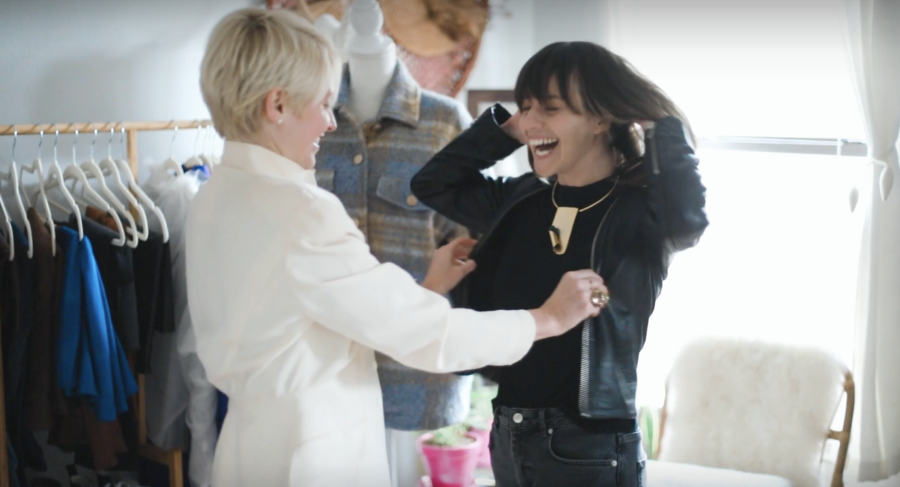
3. Dogmatism hinders progress.
The ethical community is definitely one for sub-group infighting. The staunch vegans may argue against the pitfalls of plasticized leathers and packaged proteins. The woo-woo types who decry all chemicals may not acknowledge the advancement of a fabric like Tencel over its more toxic predecessor, modal. The lifestyle martyrs may not realize when their behavior turns from inspiring to preachy or nauseating. I lost many battles like this early on and know better most of the time now.
When ingroup fighting happens, it turns more people away from the slow-living movement in the name of perfect consumerism. We can fight this by making more space for our humanness, acknowledging the humorous impossibility of making ethical decisions in our interdependent, capitalistic world, and rallying against the more powerful forces that make it harder on us—not each other.
4. You (probably) shouldn’t start a fashion brand.
Two years into blogging, I was getting so many emails about basic brands launching on Kickstarter I had to archive them with a Gmail rule. It’s hard enough to define personal style and find the brands that reflect it, but doing it sustainably presented a whole new set of challenges, especially when few brands actually looked good.
At first, they were granola, then they were mostly beige and basic. It was clear that brand owners were either letting their design perspectives get watered down because they didn’t want to compromise their ethics (fabric, sourcing, and production options are more limited) or getting in the game without a design perspective in the first place.
Starting a fashion brand is a serious undertaking. Not to mention, our fashion system is already over-saturated with designers. So unless you have the singular vision of an artist (or serious capital investment) and an appetite for nuance — I encourage you to explore other areas of the fashion supply chain. We need more talented bodies in sourcing, policy-setting, and reporting to create change. Bliss Foster explains this more eloquently than I do.
5. Giving away things for free hurts the entire community.
I say this in the sense of my own business practices. I was an early adopter of sustainable fashion and my site grew slowly compared to traditional fashion influencers. I wasn’t doing LIKEtoKNOW.it (LTK) or collaborating with major brands, but when I was doing partnerships, I wasn’t asking for pay because I thought that my numbers didn’t command it (and many early brands reinforced this idea). But I was spending hours on professional content and connecting eco-brands to a captive audience they often couldn’t get with macro influencers.
Giving my time away for free not only hindered my growth, it reinforced the idea that other conscious influencers would accept partnerships without pay. I took this feedback from my peers seriously. Today, I’m accepting fewer partnerships than ever before from brands I wear and believe in. And I’m accepting none without compensation.
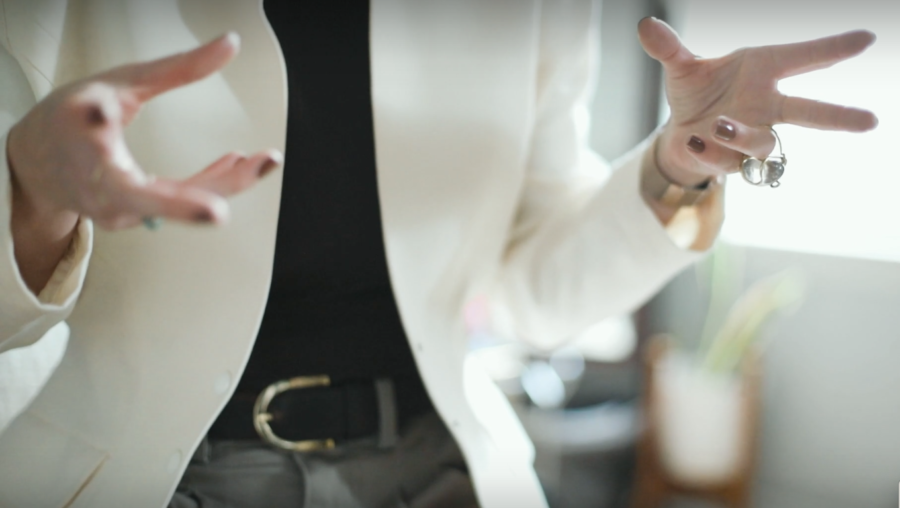
6. I will keep pushing this idea of a Wardrobe Operating Zone.
While we’re inundated with climate doom, we also have more access to sustainable fashion than ever before. (Beni anyone?) Navigating this weird dichotomy means knowing what to filter out (lookin’ at you, microtrends) and what modes of consumption work for you. The way a nutritionist might help you calculate your macro ratio, I help my styling clients nail down their Wardrobe Operating Zone. It’s the right ratio of resale, swapped, rented, and new clothing for you.
Mine hovers somewhere around 70% resale, 5% swapped, 10% rented, and 15% new. Over time, the idea is that your Wardrobe Operating Zone will start to skew more toward alternative retail and resale channels, moving you toward slower fashion. With time, and deeper refinement of your style, you’ll need fewer “new” items.
If you skimmed this and want the two actionable takeaways…spend more time on advocacy than shopping sustainably and start your transformation with what’s already hanging in your closet. If you need help with that, let’s chat (it’s free).
Been a reader for a while or just dropped by? Comments are my favorite breakfast companion. Please, I’d love to hear from you.
With gratitude for these formative years,
Kasi

